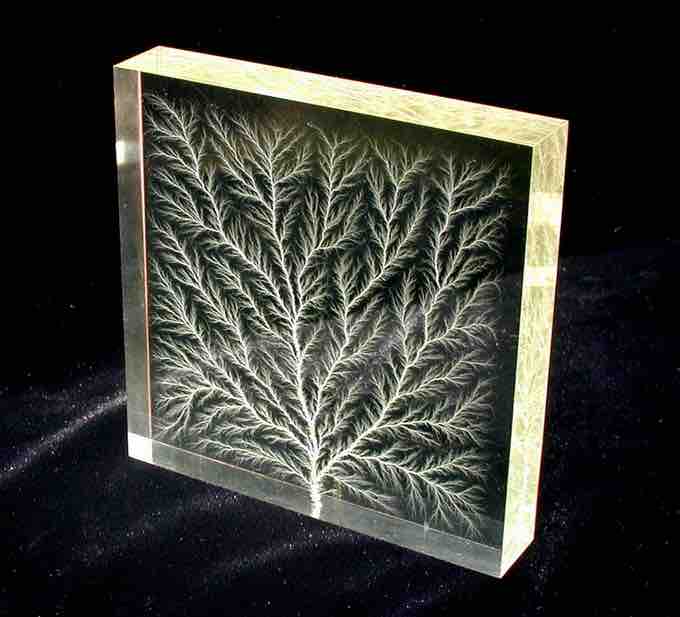Dielectric breakdown (illustrated in ) is the phenomenon in which a dielectric loses its ability to insulate, and instead becomes a conductor. Dielectrics are commonly used either to isolate conductors from a variable external environment (e.g., as coating for electrical wires) or to isolate conductors from one another (e.g., between plates of a parallel-plate capacitor). In all applications, they are selected for their ability to act as insulators. By definition, an insulator is unable to conduct electricity. Under certain conditions, however, a material that is an insulator can become a conductor.
Eventually, exposing any insulator to increasing voltage will result in the insulator becoming conductive. This point (the minimum voltage for the insulator to become a conductor) is known as the breakdown voltage. Breakdown is more of a rough concept than an exact science. A material's breakdown voltage cannot be precisely defined. As a failure, there is a probabilistic element and thus a dielectric may experience a breakdown at any of a range of voltages. Additionally, the nature of the voltage used to induce breakdown must be considered. Short pulses can be used in stress testing to resemble lightning strikes, as could a continuous applied voltage.
However, for the case of a gas being used as a dielectric, the following equation has been proven to be rather reliable in predicting breakdown voltage (Vb):
where A and B are constants that depend on the surrounding gas, p is the pressure of the surrounding gas, d is distance between the electrodes (in cm) and γse is the secondary electron emission coefficient. Gaseous dielectrics commonly experience breakdown in nature (the phenomenon of lightning is the most common example).

Dielectric breakdown of plexiglas
The treelike pattern in the plexiglas stems from the root of the breakdown. Current is dispersed in many different directions, creating different stems.